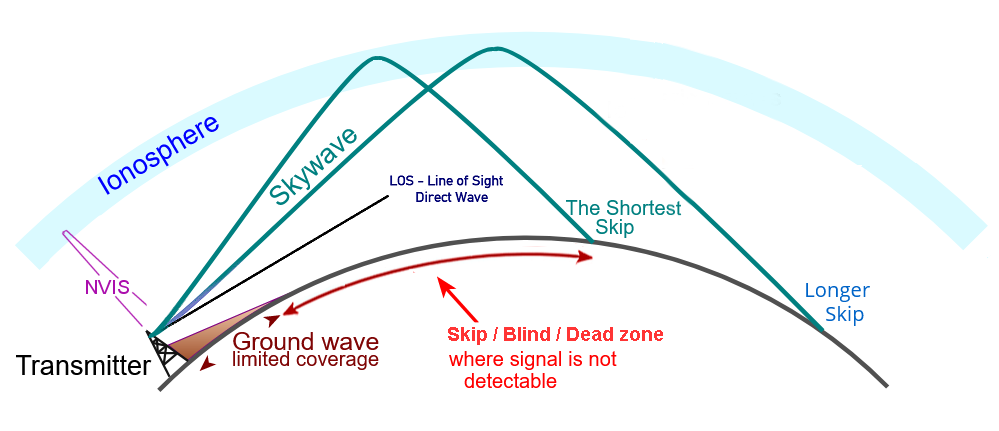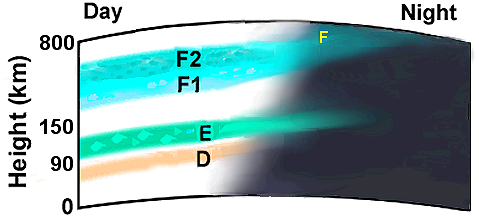
 Propagation of HF Radio Waves
Propagation of HF Radio Waves
High-Frequency (HF) radio waves, typically ranging from 3 to 30 MHz, exhibit unique propagation characteristics that make them crucial for long-distance communication. Unlike lower-frequency waves, HF waves can refract off the Earth's ionosphere, enabling global communication by "skip" propagation.
 Figure 1: Illustration of "Skip" Propagation |
At night, the ionosphere forms a single F region, which improves signal refraction for HF communication.
Factors such as sunspot activity, solar flares, and geomagnetic disturbances significantly affect HF propagation, leading to fluctuations in signal strength and quality. These dynamic phenomena require adaptable radio transmission strategies. Despite obstacles like fading, interference, and signal distortion, a deep understanding of the ionosphere's complexities is crucial for optimizing HF radio wave propagation across varying ionospheric conditions, as illustrated below:
High Frequency (HF) radio is regaining popularity for long-range communication due to its resilience and independence from traditional infrastructure. Modern advancements in technology enhance its reliability. It provides robust connectivity in remote areas, making it indispensable in emergencies and crises.
Read more about HF Radio Propagation.
Real time radio propagation map
Current solar conditions Ham radio
Current Ham Radio HF Propagation
HF propagation status and alerts
HF Radio Propagation Search Terms
HF propagation for hams explained
Radio propagation for hams explained
Current HF Band Conditions Online Map
Current Ham Radio Propagation Conditions
Real-time watching of worldwide ham activity
How does the sun affect radio communication?
Real-time watching of worldwide activity of hams
Current HF Bands Conditions—Charts for Radio Hams

